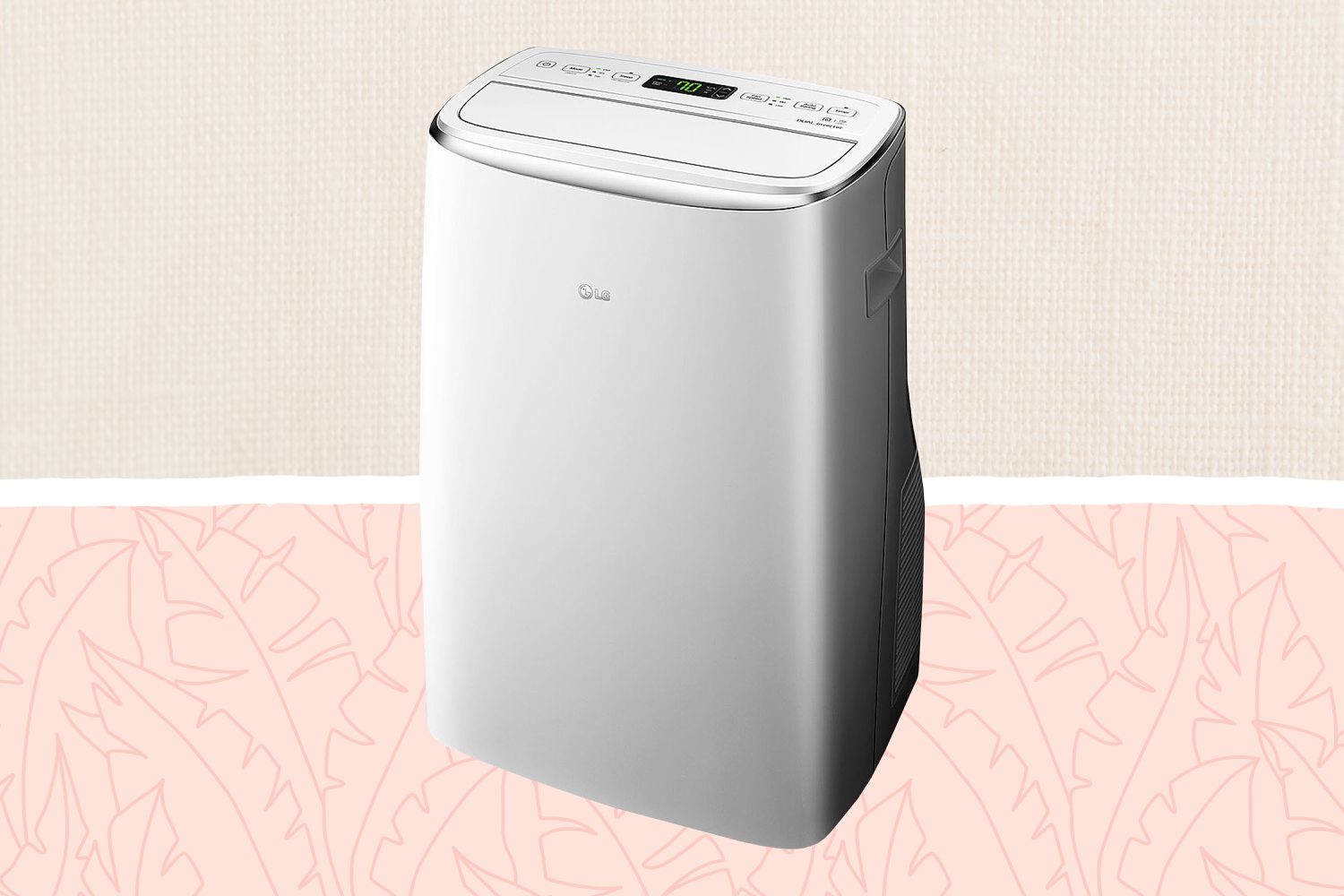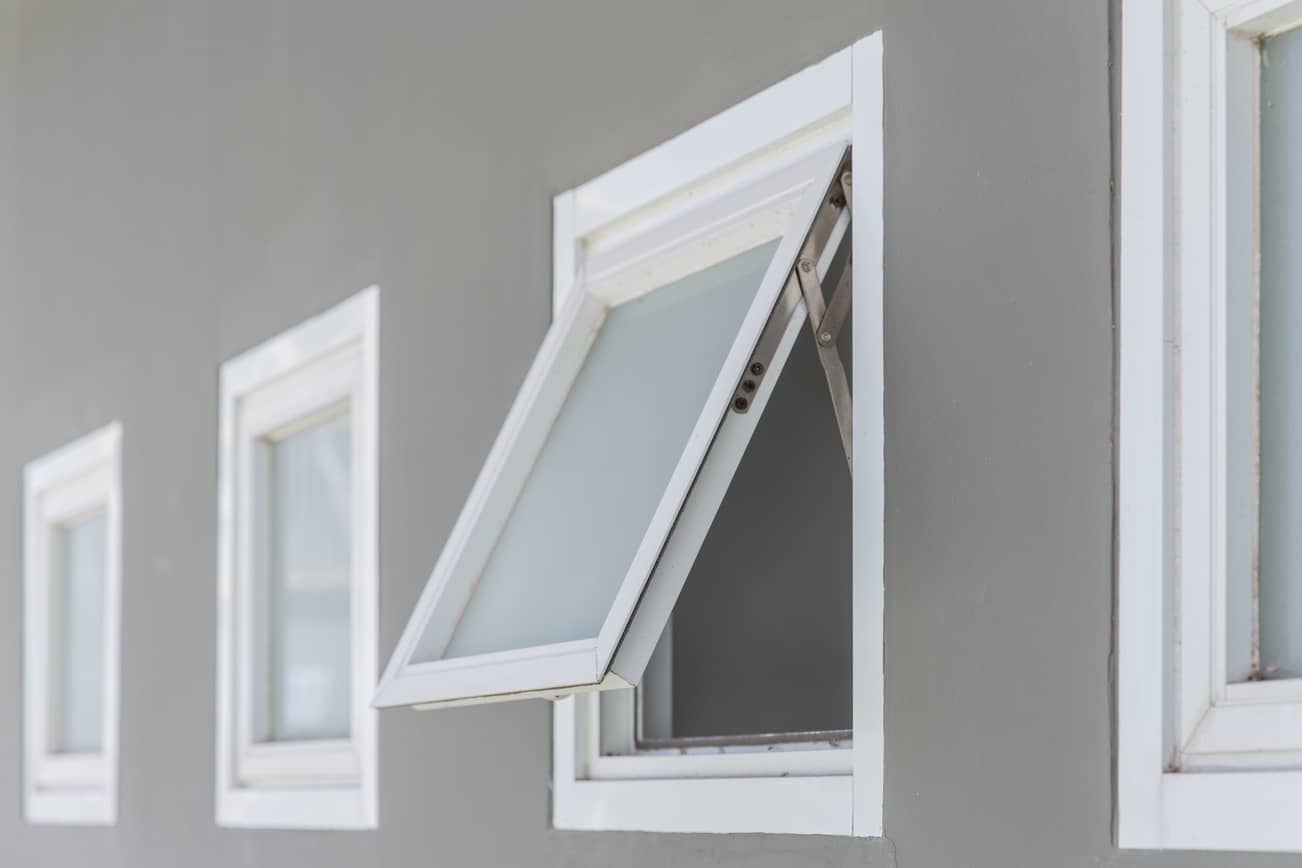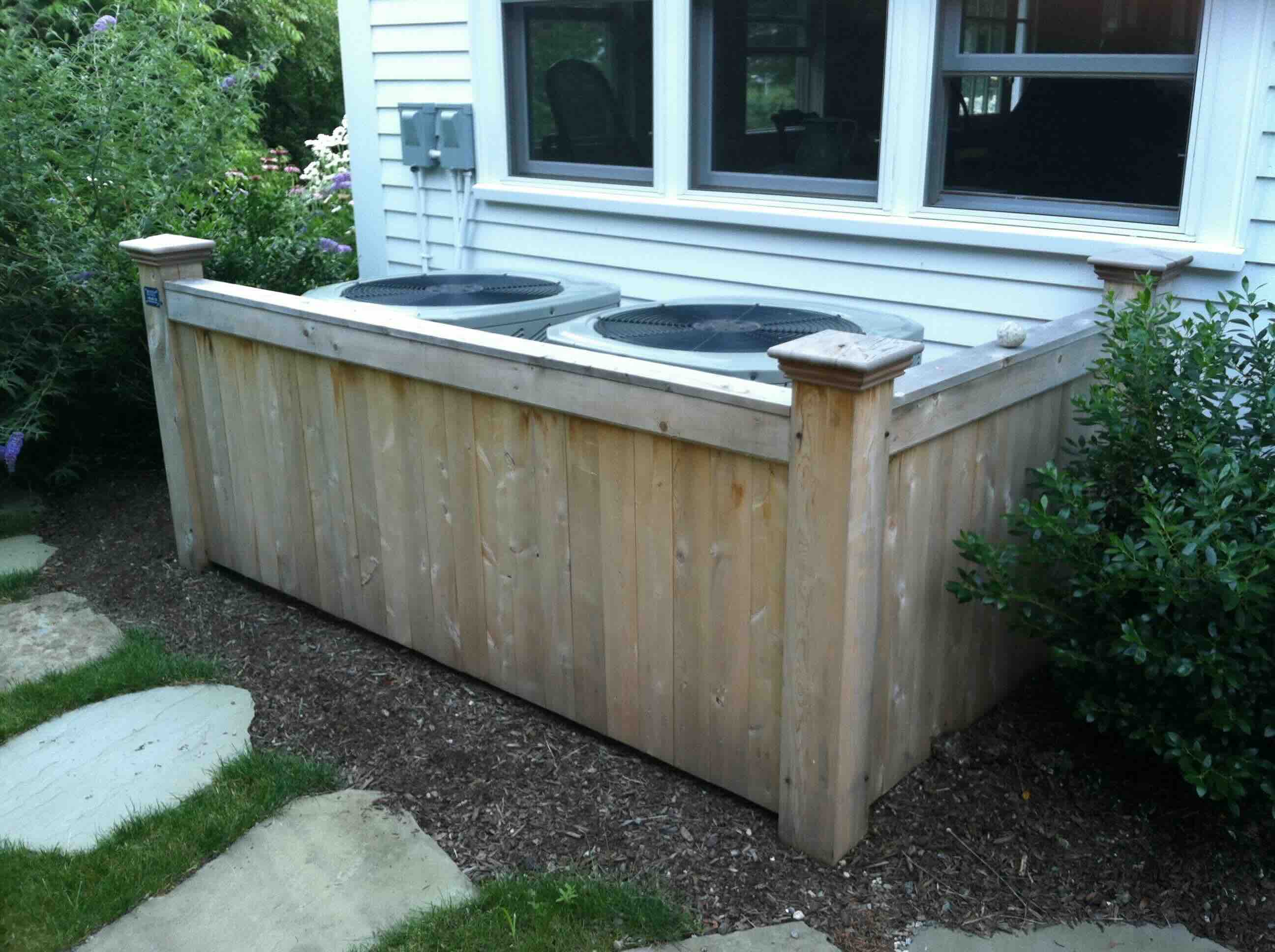Home>Home Maintenance>How To Use A Portable Air Conditioner Without A Window


Home Maintenance
How To Use A Portable Air Conditioner Without A Window
Modified: September 1, 2024
Learn how to effectively use a portable air conditioner without a window in your home. Discover useful tips and tricks for proper home maintenance.
(Many of the links in this article redirect to a specific reviewed product. Your purchase of these products through affiliate links helps to generate commission for Storables.com, at no extra cost. Learn more)
Introduction
Portable air conditioners are a convenient and efficient solution for cooling your home during the hot summer months. Traditionally, these AC units are installed by venting hot air through a window. But, what if you don’t have a window or want to avoid the hassle of window installation?
In this article, we will guide you on how to use a portable air conditioner without a window, exploring the benefits, different types of portable ACs, and alternatives to window installation methods. We will also provide you with a step-by-step guide and important precautions to ensure safe and effective cooling.
So, whether you live in an apartment without windows or want to keep your windows free from obstructions, we’ve got you covered. Let’s dive in!
Key Takeaways:
- Stay cool and flexible with a portable air conditioner without a window. Enjoy targeted cooling, no structural changes, and improved indoor air quality, all without the hassle of traditional window installation.
- Explore alternatives like sliding door venting and freestanding units for efficient cooling. Follow the step-by-step guide and precautions to use a portable air conditioner safely and effectively, creating a comfortable living space without a window.
Read more: What Is A Window Air Conditioner
Benefits of Using a Portable Air Conditioner Without a Window
Portable air conditioners offer several advantages, making them an attractive cooling option for spaces without windows or for individuals who prefer to avoid window installation. Here are some key benefits:
- Flexibility: One of the major advantages of portable air conditioners without a window is their flexibility. Unlike traditional window units, these portable ACs can be easily moved from room to room, offering cooling wherever it’s needed. Whether you’re working in your home office, relaxing in the living room, or sleeping in the bedroom, you can conveniently enjoy the cool comfort without being confined to a single space.
- No Structural Changes: Installing a window air conditioner usually requires making permanent modifications to your window frame. With a portable AC, you can avoid drilling holes or altering the structure of your window. This is particularly beneficial for renters or individuals who don’t want to make permanent changes to their living space.
- Energy Efficiency: Portable air conditioners provide a cost-effective cooling solution by allowing you to cool specific areas rather than the entire home. When using a portable AC without a window, you can concentrate the cool air directly where it’s needed, reducing energy waste and lowering your electricity bills.
- Simple Installation: Setting up a portable air conditioner without a window is typically much easier and quicker compared to installing a window unit. Many portable AC models come with flexible hoses or venting kits that can be easily connected to a nearby vent, drop ceiling, or even through a small hole in the wall. This simplicity of installation makes portable ACs an ideal choice for those who want a hassle-free cooling solution.
- Improved Indoor Air Quality: Portable air conditioners not only cool the air but also help to improve indoor air quality. Many models feature built-in filters that remove dust, allergens, and pollutants from the air, providing you with a healthier and more comfortable living environment.
Overall, using a portable air conditioner without a window offers convenience, versatility, and energy efficiency. It allows you to enjoy targeted cooling without the need for permanent installation or major structural changes to your home.
Types of Portable Air Conditioners
When it comes to portable air conditioners, there are a few different types to choose from. Each type has its own unique features and advantages. Let’s take a closer look at the different types of portable AC units:
- Single-Hose Portable Air Conditioners: Single-hose portable air conditioners are the most common type. They feature a single exhaust hose that vents hot air outside while pulling in fresh air from the room. These units are relatively easy to set up and provide effective cooling for individual rooms. However, they may not be as energy-efficient as other types because some of the cooled air is expelled through the exhaust hose.
- Dual-Hose Portable Air Conditioners: Dual-hose portable air conditioners are considered more efficient than single-hose units. They have two separate hoses – one for intake and one for exhaust. The intake hose pulls in fresh air from outside, while the exhaust hose vents the hot air. This type of AC provides faster cooling and prevents negative air pressure from building up in the room. Dual-hose portable air conditioners are a great option for larger spaces or in situations where maintaining a consistent temperature is crucial.
- Evaporative Portable Air Conditioners: Evaporative portable air conditioners are a popular choice for dry climates. Instead of using refrigerant, these units rely on the evaporation of water to cool the air. They work by drawing in warm air and passing it through a series of moistened pads. As the air passes through the pads, the water evaporates, reducing the temperature. While evaporative portable ACs can effectively cool the air, they do increase humidity levels, so they may not be ideal for humid regions.
- Heat Pump Portable Air Conditioners: Heat pump portable air conditioners offer both cooling and heating capabilities, making them suitable for year-round use. These units use a reversing valve to switch between cooling and heating modes, allowing you to maintain a comfortable temperature regardless of the season. Heat pump portable ACs are energy-efficient and provide consistent cooling and heating performance.
Choosing the right type of portable air conditioner depends on your specific needs, room size, and climate conditions. Consider factors such as energy efficiency, cooling capacity, and additional features when selecting the best portable AC unit for your space.
Alternatives to Traditional Window Installation
If you don’t have a window or prefer not to install a portable air conditioner using the traditional window method, there are alternative options available. Explore these alternatives to find the best solution for your cooling needs:
- Sliding Door Venting Kit: If you have a sliding glass door in the room where you want to use the portable air conditioner, a sliding door venting kit can be a great alternative. This kit allows you to insert a venting panel into the space between the door and the frame, creating a seal. The exhaust hose of the portable AC can then be attached to the venting panel, allowing hot air to be vented outside while keeping cool air inside.
- Drop Ceiling Venting: Another alternative is to use the drop ceiling venting method. If you have a drop ceiling in the room, you can cut a hole in one of the panels to accommodate the exhaust hose. Attach the venting panel and connect the hose to it, allowing the hot air to be vented out through the ceiling plenum. This method provides a discreet installation while efficiently removing hot air from the room.
- Wall Venting: If you have access to an external wall, you can consider wall venting as an alternative. This method involves cutting a small hole in the wall to insert a venting panel. The exhaust hose can be connected to the panel, allowing hot air to be expelled outside. It’s important to ensure that the hole is properly sealed to prevent air leakage and maintain energy efficiency.
- Freestanding AC Units: If you are unable to use any of the venting alternatives mentioned above, you may opt for a freestanding portable air conditioner. These units do not require any external venting as they use an evaporative cooling method. They work by cooling the air through the evaporation of water and do not produce hot air that needs to be vented outside. However, keep in mind that freestanding AC units may not be as effective in cooling larger spaces or in areas with high humidity levels.
Each alternative has its pros and cons, so consider factors such as convenience, effectiveness, and the specific requirements of your space before choosing the best alternative to traditional window installation for your portable air conditioner.
You can use a portable air conditioner without a window by using a vent hose to direct hot air outside through a ceiling, wall, or door. Make sure the room has proper ventilation to prevent overheating.
Step-by-Step Guide to Using a Portable Air Conditioner Without a Window
If you want to use a portable air conditioner without a window, follow these step-by-step instructions for a successful setup:
- Choose the Ideal Location: Select a suitable location for your portable air conditioner. It should be near an appropriate venting option, such as a sliding door, drop ceiling, or external wall. Ensure that there is ample space around the unit for proper airflow.
- Prepare the Venting Option: Depending on the venting alternative you’ve chosen, prepare the necessary tools and materials. For a sliding door venting kit, assemble the kit components and adjust the panel to fit the door frame. If you’re using drop ceiling venting or wall venting, measure and cut the appropriate hole for the venting panel.
- Attach the Venting Panel: Install the venting panel according to the instructions provided for your specific venting method. Make sure it fits securely and creates a tight seal to prevent air leakage.
- Connect the Exhaust Hose: Take the exhaust hose provided with your portable air conditioner and attach it to the venting panel. Ensure that the connection is secure to prevent hot air from escaping into the room.
- Position the Air Conditioner: Place the portable air conditioner in the desired location, ensuring that it is stable and level. You may need to adjust the height or angle of the exhaust hose, depending on the venting option you’re using.
- Power On the Unit: Plug in the portable air conditioner to a nearby electrical outlet. Turn on the unit and adjust the settings according to your desired temperature and fan speed.
- Monitor and Maintain: Regularly monitor the performance of your portable air conditioner to ensure it is cooling effectively. Clean or replace the air filters as recommended by the manufacturer to maintain optimal airflow and indoor air quality.
By following these steps, you can enjoy the cooling comfort of a portable air conditioner without the need for traditional window installation. Remember to refer to the user manual provided with your specific portable AC for any additional instructions or safety precautions.
Read more: How To Store A Window Air Conditioner
Precautions and Tips for Using a Portable Air Conditioner Without a Window
While using a portable air conditioner without a window offers convenience and flexibility, it’s important to keep in mind certain precautions to ensure safe and efficient operation. Here are some essential tips to consider:
- Venting Safety: Ensure that the venting option you choose is safe and secure. Avoid blocking any pathways, doorways, or emergency exits with the venting panel or hose.
- Proper Venting Setup: Make sure the exhaust hose is properly connected and sealed to the venting panel. Any gaps or leaks may result in hot air being released back into the room, reducing the cooling efficiency of the unit.
- Adequate Airflow: Maintain proper airflow around the portable air conditioner by keeping furniture, curtains, and other objects away from the unit. Obstructions can restrict airflow, leading to reduced cooling performance and potential overheating of the unit.
- Regular Maintenance: Clean or replace the air filters regularly to ensure optimal performance. Clogged filters can reduce airflow and decrease the cooling efficiency of the unit. Refer to the manufacturer’s instructions for guidance on proper filter maintenance.
- Proper Insulation: Seal any gaps around the venting panel or hose to prevent air leakage. This will help maintain energy efficiency and ensure that the cooled air remains inside the room.
- Temperature Regulation: Set the temperature at a comfortable level, but avoid setting it too low. Overcooling can result in excessive energy consumption and can put strain on the unit, potentially leading to malfunctions.
- Noise Considerations: Portable air conditioners can generate noise during operation. If you’re using the unit in a bedroom or an area where noise is a concern, look for models with quieter operation or consider using sound-dampening materials to minimize the noise.
- Power Supply: Ensure that the electrical outlet you are using can handle the power requirements of the portable air conditioner. Avoid overloading the circuit by plugging in too many devices simultaneously.
- Unattended Operation: Avoid leaving the portable air conditioner unattended for long periods. It’s important to regularly check the unit and monitor its performance to ensure efficient operation and identify any potential issues.
By following these precautions and tips, you can use a portable air conditioner without a window safely and effectively, allowing for a comfortable and cool living space.
Conclusion
Using a portable air conditioner without a window offers a practical and efficient cooling solution for spaces where traditional window installation is not ideal. Whether you live in an apartment without windows, want to avoid permanent modifications to your window frame, or simply desire the flexibility of moving the AC unit around, portable ACs provide a convenient alternative.
We discussed the benefits of using a portable air conditioner without a window, including flexibility, no structural changes required, energy efficiency, simple installation, and improved indoor air quality. We also explored different types of portable AC units, such as single-hose, dual-hose, evaporative, and heat pump models, each with their own advantages and considerations.
If you’re unable to use traditional window installation, we provided alternative options like sliding door venting kits, drop ceiling venting, wall venting, and freestanding AC units. These alternatives allow you to vent the hot air produced by the portable air conditioner outside the room without the need for a window.
Additionally, we provided a step-by-step guide to help you set up a portable AC unit without a window, emphasizing the importance of proper venting, maintaining adequate airflow, and performing regular maintenance. We also mentioned precautions regarding venting safety, temperature regulation, noise considerations, and power supply.
In conclusion, portable air conditioners without a window offer a convenient and flexible cooling solution, providing comfort and relief during hot summer days. By carefully considering the alternatives to window installation, following the correct setup process, and practicing necessary precautions, you can enjoy the benefits of a portable air conditioner without the need for a window.
Remember to refer to the user manual provided with your specific portable air conditioner for detailed instructions and safety guidelines. Stay cool and comfortable as you beat the heat with a portable air conditioner, tailored to meet your needs and preferences, without the limitations of traditional window installation.
Frequently Asked Questions about How To Use A Portable Air Conditioner Without A Window
Was this page helpful?
At Storables.com, we guarantee accurate and reliable information. Our content, validated by Expert Board Contributors, is crafted following stringent Editorial Policies. We're committed to providing you with well-researched, expert-backed insights for all your informational needs.














